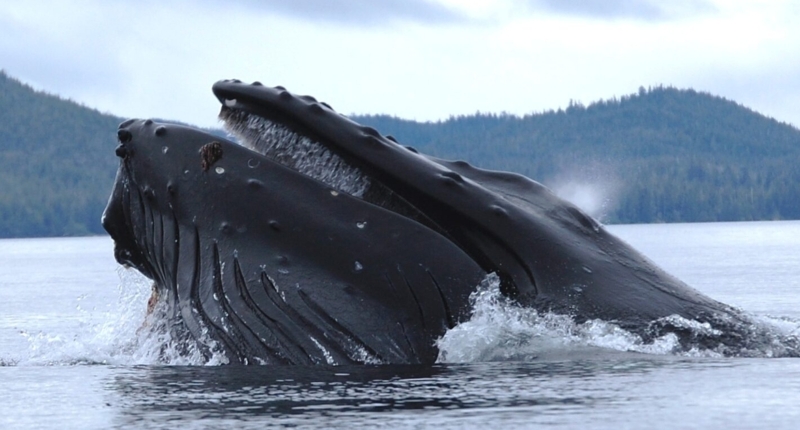Humpback whale populations in Southeast Alaska are slowly recovering following the devastating effects of the 2014-2016 Pacific marine heat wave known as “The Blob.” The underwater famine caused by the heat wave almost wiped out 50% of the resident humpback whales in Glacier Bay and Icy Strait. The good news is that whales are starting to return and thrive, and the latest update shows sure signs of improvement, with fewer emaciated and skinny whales. Despite the positive news, adult whales still face the threat of vessel strikes, especially as the ratio of whale watching boats to individual whales is increasing in Southeast Alaska, which can stress humpbacks, making proper feeding even more difficult. Wildlife biologist Janet Neilson warns that avoiding extra stress and deaths for humpbacks will be essential as climate change increases the chance of future marine heat waves.
Southeast Humpback Populations are Recovering, but Lingering Effects of Pacific Marine Heat Wave Persist
The humpback whale populations in Southeast Alaska are improving after the devastating effects of the 2014-2016 Pacific marine heat wave, also known as “The Blob.” This is according to the 2022 Glacier Bay humpback survey, which reports that whales are starting to return and thrive.
During the heat wave, cold-water fish and plankton species declined, causing an “underwater famine,” and researchers believe it killed almost half of the resident humpback whales in Glacier Bay and Icy Strait. Almost 50% of humpback regulars have gone missing in the years since, and most are presumed to have died because of the heat wave.
However, things are now looking up for Southeast Alaska’s humpback whales, with signs of improvement. The 2022 update shows that whales are staying longer in Glacier Bay and Icy Strait than they did during the heat wave, which points to a much-needed improvement in feeding conditions. Whales are also reproducing more successfully, with fewer sudden calf deaths.
Despite the good news, birth rates have still not returned to pre-heat wave levels, and scientists are unsure of the exact cause. Wildlife biologist Janet Neilson with Glacier Bay National Park says that may mean female whales have not recovered enough nutrition to support pregnancies.
“The good news is that whales are very resilient,” Neilson said. “They are really capable of rebounding.” Humpback whales fuel up before migrating to winter breeding grounds in Hawaii and Mexico, making Glacier Bay and Icy Strait an essential feeding ground for them.
Neilson also mentions that the team kept seeing devastating survey results for several years after the heat wave ended, which they refer to as “the hangover of the heat wave.” However, the latest update shows that whales are starting to fatten up again, and there are less emaciated and skinny whales.
Although the Pacific marine heat wave has caused long-lasting effects on the marine ecosystem in Alaska, it is encouraging to see that the humpback whale populations are showing signs of improvement, and the hope is that they will continue to recover over time.
Vessel Strikes Still a Threat for Southeast Humpback Whales
Despite the positive news of Southeast Alaska’s humpback whale populations improving, adult whales still face the threat of vessel strikes. The 2022 survey documented at least one death of an adult female whale near Angoon, which matters significantly given that the survey found only 165 adult humpbacks in Glacier Bay and Icy Strait.
As the ratio of whale watching boats to individual whales increases in Southeast Alaska, researchers are concerned that the risk of disturbances is also rising. Too much boat activity can stress humpbacks, making proper feeding even more difficult.
Wildlife biologist Janet Neilson with Glacier Bay National Park warns that avoiding extra stress and deaths for humpbacks will be essential as climate change increases the chance of future marine heat waves. However, for now, she says that Southeast’s humpbacks are on a good track, even though things are still not back to where they were. Positive signs are evident, but it is important to continue protecting these magnificent creatures from harm.
Don’t miss interesting posts on Famousbio









